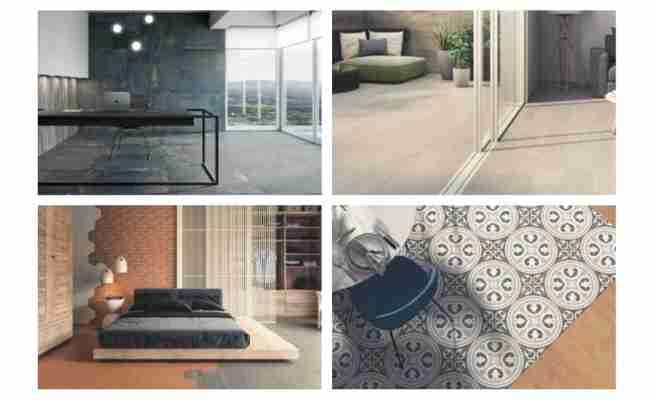Ceramic tiles offer an exciting and infinite number of design possibilities for decorating interiors and exteriors. Thanks to their versatility in size, shape, format and pattern, architects, designers and homeowners have an extensive selection of options to choose from to craft unique designs.

While tiles are traditionally placed upon floors and walls with collection counterparts, Tile of Spain USA is stepping out-of-the-box to explore modern and innovative ways to apply the beauty and practicality of this surface material.
Ceramic Rugs
New ranges of tiles from Spanish manufacturers are often designed with a degree of flexibility when it comes to installation. Creating collections of patterned ceramics that can be placed together with opposing styles in matching sizes and thicknesses means that a variety of effects can be combined in one space.
One highly effective technique is to create a “rug” made of tiles to define a zone, then use contrasting surfaces to emphasize that area. Monochrome geometrics pop against white marble-look porcelain, while floral-inspired patterns are beautifully suited with ceramic wood. Another alternative is a simple border of black and white tiles creating a bold floor with a classic look.
Feature Walls
A powerful way to infuse drama into a space is to add a tiled feature wall, which allows a bold pattern to be used in a way that does not overwhelm the rest of the room. Tiles can accentuate the architectural details of a space or establish a focal point in overlooked areas, such as under eaves.
Feature walls are ideal for inviting vibrant energy to neutral schemes and create more cheerful spaces as part of a concept.
Mixed Materials
Traditionally, when surface materials were chosen for interior designs, the various materials were placed in distinct areas, for example in a kitchen tiles were placed along the backsplash, stone used for the counter and wood for the floor.
With modern tile design, it’s possible to be much more fluid with material placement. Ceramic tile producers have developed advanced digital printing techniques to imitate marble, wood and cement, allowing these “materials” to be seamlessly grouped together.
Indoor-Outdoor Transitions
As the popularity of tiles for outdoor living spaces grows, Spanish tile makers have responded with ranges that offer a 2cm-thick tile for the gardens, patios, and terraces with a coordinating slimmer tile for adjacent interior settings. The result is a harmonious transition between interior and exterior spaces. These collections are often available in anti-slip finishes for high-traffic areas and with the strength and durability to withstand changes in climates.
Flexible Facades
Ceramic tiles have changed the way architects approach exterior design. They offer flexibility and unique design applications that were often unattainable with other raw materials like steel or stone. When installed on facades, tile invites style and personality to buildings through pops of color or digital prints to set a stunning first impression.
When applied externally ceramics provide greater acoustic and thermal insulation or can even be used to channel away rainwater.
All-Over Appearance
Surfaces that segue from wall to floor to countertop or other architectural elements of a room can create a strong contemporary look. This is a style that can only be achieved with very specific products. Spanish manufacturers have been successful in creating a variety of tile designs that can be installed in all applications.
The use of cutting-edge digital printing technique allows for thematic design; for example, an all-over marble-effect porcelain creates a luxurious aesthetic whereas a cement-effect lends more of an industrial feel. The availability of large-format slabs means fewer joins and a grout-free appearance that further enhances the look of a space.
For even more projects, products and news from Tile of Spain, visit








